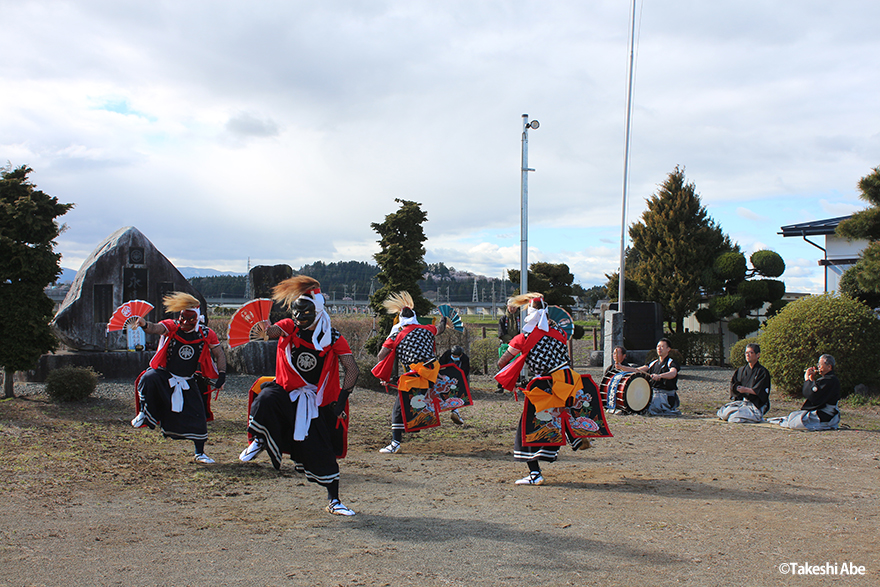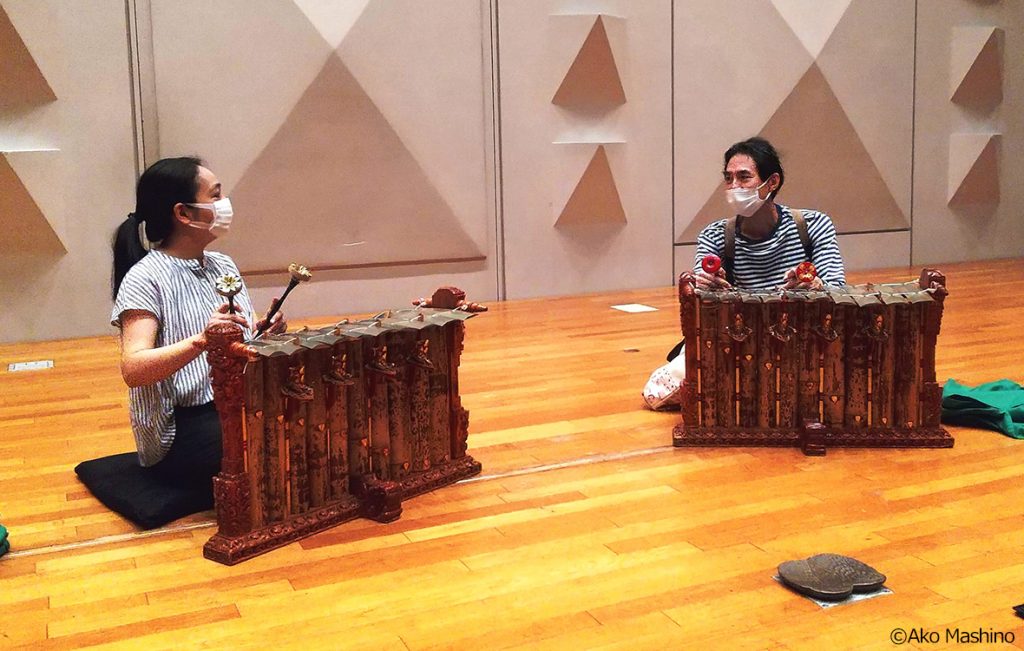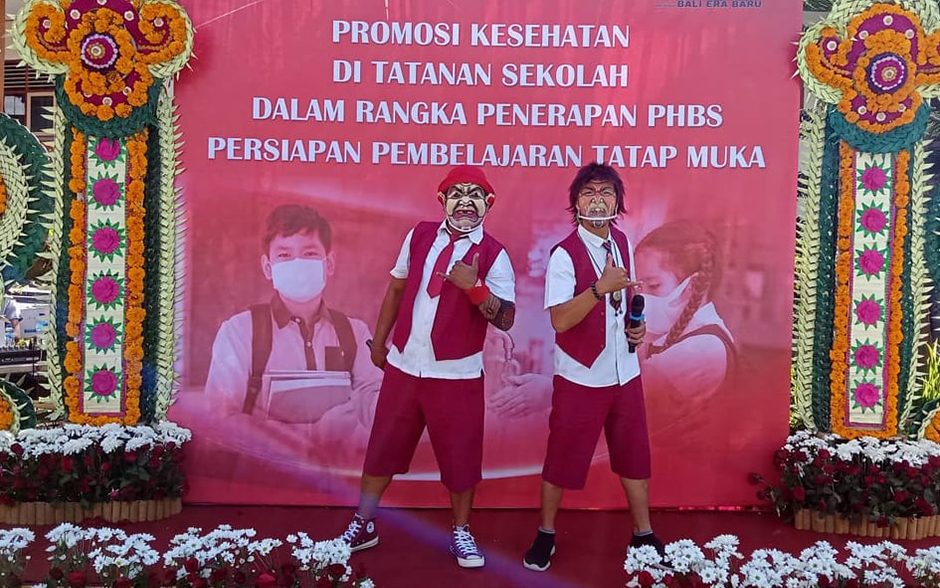This website introduces the activities and results of the research project “Performing arts in the ‘Time of Corona’: Response to the crisis, negotiations about their physical nature, and their relationship with society” (KAKENHI Grant-in-Aid for Scientific Research [B]). This research investigates the impact of COVID-19 on performing arts and our understanding of them. We use the phrase “time of corona” as a neutral expression, rather than “coronavirus crisis” (korona-ka in Japanese) because we recognize that the novel coronavirus is not necessarily only connected with “crisis” or “disaster”.
Purpose of Research
The novel coronavirus (COVID-19) pandemic has affected the performing arts worldwide in a variety of ways. How has living with the virus during the “time of corona” changed the way performing arts—such as music, dance, and drama—are performed and passed on? How can we update our understanding of performing arts and the physicality of the performing body, by examining the evolving dynamics of performing arts during this emergency?
The study explores these two questions by primarily considering the situation in East and Southeast Asia. While focusing on the so-called “traditional performing arts,” we discuss and compare these with other genres and regions where appropriate. Experts in cultural anthropology, dance, ethnology, music history, cultural administration, and video documentation have conducted joint research, and discuss interdisciplinary issues across regions and genres. We focus on the following three aspects in particular: (A) new expressions and performances in response to the COVID-19 crisis, (B) new ways of performing, teaching, and learning devised to prevent infection, and the resulting conflicts and negotiations about the physical nature of performing arts, and (C) the relationship between performing arts and society, redefined during the time of COVID-19.
A) New expressions and performances in response to the COVID-19 crisis
Performing arts can be a form of human response to hazards and risks, including natural disasters and epidemics. How has this function played out during this pandemic? How has the experience of confronting COVID-19 been expressed in performances? We discuss the dynamic relationship between infectious diseases and the performing arts by analyzing performances to ward off evil; the utilization of performing arts to promote messages about infection prevention; and expressions in the performing arts that incorporate the “new normal” of living with the virus. Cases of performing arts in historical disasters, such as the SARS outbreak and the Great East Japan Earthquake, are taken as key reference points.

B) New ways of performing, teaching, and learning devised to prevent infection, and the resulting conflicts and negotiations about the collective, physical, and local nature of performing arts

We focus on new ways of performing and passing on traditions that performers have developed to deal with the restrictions on movement and social interactions, and identify their effects on performing arts. The subjects of the study are bricolage-type performances using people and objects that are available “at home,” new forms of production, performance, and teaching utilizing online spaces, and ways of performing in person that incorporate measures to prevent infection. Initiatives at educational institutions are also an important point of focus. By examining these performances and settings, we discuss ways in which the collective, physical, and local nature of performing arts are perceived, negotiated, and changing.
C) The relationship between performing arts and society, redefined during the time of COVID-19
How much were “non-essential” performing arts prohibited, restricted, or expected to practice in voluntary closures in society? To what extent were performers entitled to compensation, and how have they responded? What kind of discussions have been held about the role of performers and performing arts in society? We discuss the emerging relationship between society and performing arts in response to the pandemic.

Research members
| Role | Name | RESEARCH FIELD/ACADEMIC FIELD & RESEARCH |
|---|---|---|
| Coordinator | Yukako Yoshida | Indonesia, Japan / Cultural Anthropology |
| Takeshi ABE | Japan / Video Recording Production | |
| ● | Misako OTA | Europe, North America, Japan / Musicology and Music Culture History |
| ● | Satomi OSHIO | Japan, Asia / Musicology and Ethnomusicology |
| ● | Chie KAMINO | South Korea, Japan / Ethnomusicology and Folk Entertainment Studies |
| Masataka SUZUKI | China, India, Indonesia, Sri Lanka, Japan / Cultural Anthropology, Religious Studies and Folklore | |
| ● | Yoshiaki TAKEMURA | South India, Singapore, Sri Lanka, Japan / Anthropology of Performing Arts, Dance Ethnography, South Asian Area Studies |
| ● | Ryoko NAGAMINE | China, Taiwan / Ethnomusicology |
| ● | Megumi MAEHARA | Japan / Preservation Culture |
| ● | Ako MASHINO | Indonesia, Southeast Asia, Japan / Ethnomusicology and Southeast Asia Performing Arts Studies |
| ● | Daisuke MUTO | Japan / Dance Studies |
KAKENHI study co-investigators are marked with ●, the rest are research collaborators
KAKENHI (Grants-in Aid for Scientific Research)
Grant-in-Aid for Scientific Research (B)”Performing arts nurtured in the “Time of Corona”: Response to the crisis, negotiation on physicality, and their positions in each society”
| Project/Area Number | 21H00643 |
|---|---|
| Study period | 2021-04-01 ~ 2024-03-31 |
AA Research Institute Joint Use and Joint Research Issues
This study is linked to the following projects for joint use and research by the International Research Center Research Institute for Languages and Cultures of Asia and Africa (IILCAA), Tokyo University of Foreign Studies.
An Interdisciplinary Study on Performing Arts in the Time of COVID-19
| Study period | 2021/04/01 – 2024/03/31 |
|---|---|
| Coordinator | Yukako Yoshida (ILCAA) |
| 2nd Coordinator | Ako Mashino (Tokyo University of the Arts) |
